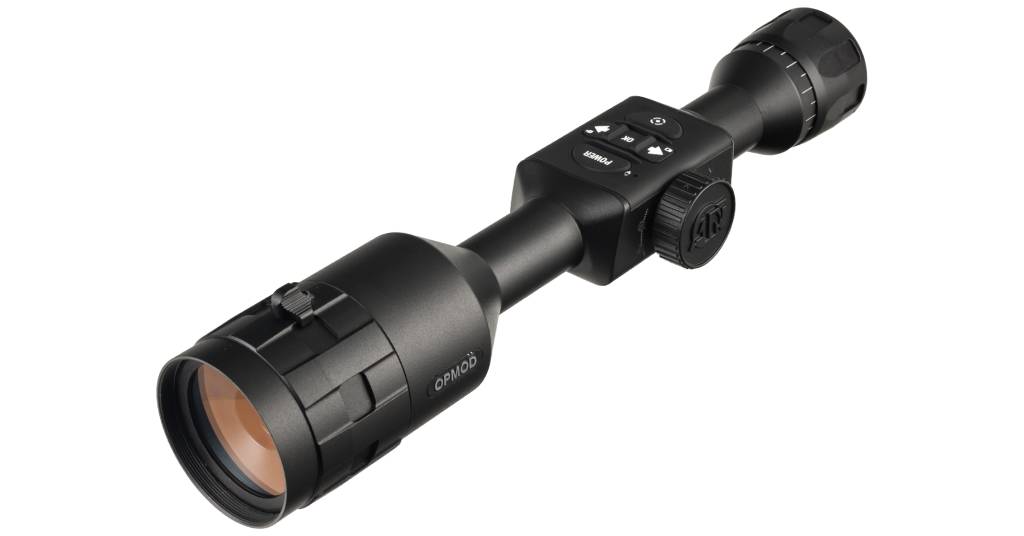Night Vision Scope Technology - A Quick Outlook
At the end of the day, when the grid is down, and everything around you is pitch black, the ability to see around you can be detrimental to your wellbeing – as simple as that.
This is the time when night vision [NV] really comes into play.
The ability to see in the dark is made possible by the use of two types of technologies:
- image enhancement
- thermal imaging
Both technologies utilize available light to see in the dark, however they are fundamentally different in the way that light is utilized.
Image enhancement technology deals with the usage of lesser amounts of light that are emitted by an object.
Vis-à-vis, thermal imaging deals with body heat and infrared light with higher frequencies.
In A Rush? Here's The QUick List:
Types of Night Vision Devices
Night vision devices, as such, encompass an endless variety of systems, however, catalogued mostly into five broad categories which are, monoculars, binoculars, goggles, cameras, and scopes.
As a matter of expediency and practicality, my mission today is to narrow down some of these categories by focusing just on “scopes” – to wit, [t]he most popular consumer user application of night vision technology.
The fact that scopes are the “leader-of-the-pack” in a trendy line of products as are night vision devices, speaks for itself.
This popularity, mostly to do with what these systems can do in terms of enhancing viewing capabilities in dark or low-light environments.
What is a Night-Vision Scope?
So, if you know me, or if you have read any of my previous reviews, you ought to know by now that I am one for keeping things as simple and straightforward as possible and today is no exception.
Like I always say, first things first. While a lot has been written about night vision devices in general, I am sorry to say, we cannot make the same claim for night vision scopes.
The latter [scopes] for short in what is commonly known as a “telescopic sight.”
Regardless of which label you chose to call them; telescopic sights or scopes are optical sighting devices based on a refracting telescope.
Taking this simple concept or description down one step further, an optical sighting device [or “optic” for short] is a device that processes light waves, a/k/a photons, either to enhance an image for viewing or to analyze and determine their characteristic properties.
Scopes – the Lexicon
There are, if you will, several words, terms, labels, all which form part of a lexicon, words commonly used in a language, by a person or a group of people.
In our case here, words as used in relation to telescopic sights or scopes, some of which, you should, at the very least, be acquainted with.
That said, however, it is not my objective today to make you a “scope” expert, but rather that you acquire certain basic knowledge and/or understanding of a product-line which may, in fact, become one of your most valuable possessions within your tactical gear arsenal.
Refracting Telescope
A refracting telescope (also called a refractor), as the name implies, is a type of optical telescope that uses a lens as its objective to form an image (also referred to as a dioptric telescope).
The refracting telescope design was originally used in spyglasses and astronomical telescopes but is also used for long-focus camera lenses.
Magnification
Magnification is the process of enlarging the apparent size, not the physical size, of something.
This enlargement is quantified by a calculated number also called "magnification".
When this number is less than one, it refers to a reduction in size, sometimes called minification or de-magnification.
Typically, magnification is related to scaling-up visuals or images to be able to see more detail by increasing the resolution.
The magnification of the image does not change the perspective of the image.
Iron Sights
Iron sights are a system of physical alignment markers (usually made of metallic material) used as a sighting device to assist the accurate aiming of ranged weapons (such as a firearm, air gun, crossbow or even compound bow), or less commonly as a primitive finder sight for optical telescopes.
The earliest sighting devices relied completely on the viewer's naked eye (mostly under ambient lighting) and is distinctly different to optical sights such as telescopic sights, reflector (reflex) sights, holographic sights, and laser sights, which make use of optical manipulation and/or active illumination, as well as the newer optoelectronics, which use digital imaging and even incorporate augmented reality.
Reflector [Reflex] Sights
A reflector sight or reflex sight is an optical sight that allows the user to look through a partially reflecting glass element and see an illuminated projection of an aiming point or some other image superimposed on the field of view.
Holographic or Laser Sights
A holographic weapon sight or holographic diffraction sight is a non-magnifying gunsight that allows the user to look through a glass optical window and see a holographic reticle image superimposed at a distance on the field of view.
The hologram of the reticle is built into the window and is illuminated by a laser diode.
Scope Mounts
Scope mounts are used to attach telescopic sights or other types of sights to firearms.
The scope sight itself is usually made for only one of two main types of mounts, which can be classified as scopes for ring mounts (for example a 30 mm tube) or scopes for rail mounts (like for example the Zeiss rail).
Scopes – Principal Uses
Telescopic sights are used with all types of systems that require magnification in addition to visual aiming.
Vis-à-vis, non-magnifying systems, on the other hand, are typically found on long-barrel firearms, particularly rifles, usually requiring a scope mount.
Scopes are typically equipped with some form of referencing pattern, better known as a “reticle” – a/k/a graticule, which is a pattern of fine lines or markings built into the eyepiece of the telescopic sight, to provide measurement references during visual inspections.
Reticles are mounted in a focally appropriate position to provide accurate point of aim.
About Telescopic Scopes
History
So, as I explained in one of my earlier reviews, night-vision devices first came into use in WWII, and into a wider use in the Vietnam War.
Then again, as promised in my opening Introduction, my mission today is to separate scopes from other night-vision devices.
To that end, I can say that the first experiments dealing with shooters’ optical aiming aids go as far back as the early 17th century.
Suffice it to say, the more primitive versions of telescopic sights had practical limitations in their performance.
While I have chosen to spare you a detailed history of telescopic sights or scopes, I did find interesting how today’s use of “reticles” came to being.
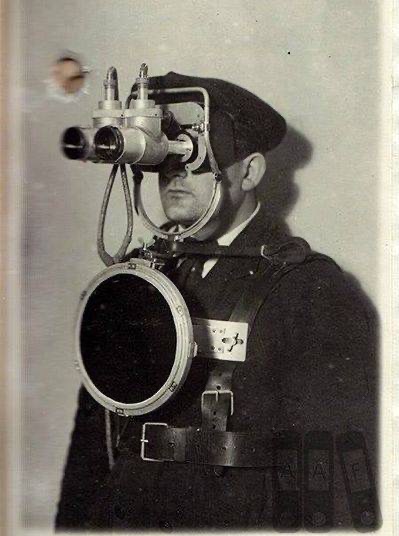
Early Night-Vision Goggles Prototype From Russia
So, reticles, a/k/a reticules and graticules are a pattern of fine lines or markings built into the eyepiece of an optical device – in our case as used in telescopic sights.
The most rudimentary reticles are typically in the form of crosshairs as a pair of perpendicular intersecting lines in the shape of a cross.
The origins of reticles are credited to amateur English astronomer William Gascoigne in the late 1630’s.
While experimenting with a telescope, Gascoigne left it with the case open.
He later found that a spider had spun its web inside the case, and when he looked through the telescope, he found the web was in focus with distant objects.
He then realized he could use this principle to make a telescopic sight for use in his astronomical observations.
The first documented telescopic rifle sight dates back to 1835.
Since then, technological innovations paved-the-way for some of today’s more modern and sophisticated systems with improved magnifications and with extra long eye relief provisions that became available for use on handguns and rifles.
Matter of fact, one can readily say that, as far as scopes and telescopic sights are concerned, the preferred metrics or criterions used to catalogue improvement and sophistication deal, specifically, with magnification.
Some of the most powerful conventional rifle scopes you can buy feature up to 80x magnification, raising their optics’ bar to new and much higher unexpected levels.
What to Look for When Buying A Night Vision Scope
Important Considerations
So, you own, I assume, most all products you thought you needed in your tactical gear arsenal, however missing that critical addition of a telescopic sight or scope.
And, you have realized, somewhere along the way, that such a system is a vital possession for most of us, principally, those of us who have made hunting a fundamental part of our lives.
The all-important decision to purchase a telescopic sight or scope is typically followed by an awareness of a need that demands to have a basic understanding of what you are getting into.
In other words, yes, a scope, is a scope, is a scope.
Only thing is, there are, if you will, limitless variations and systems in the marketplace, to where you can and will be easily overwhelmed by the many options you will find once you enter the marketplace for these systems.
One quick way to narrow those options and to combat being intimidated in your purchasing journey is simply to learn the basics.
There are, if you will, some parameters and criterions which I deem critical for all scope buyers to familiarize with – factors which can only help you narrow down the options as to which is the system best suited for you.
Besides all else, telescopic sights / scopes are typically designed for the specific applications for which they are intended.
These designs define certain optical parameters or specifications, which are critical in your purchasing considerations.
Below are some of these particularly critical parameters or specifications:
Magnification
As mentioned before, telescopic sights are classified in terms of optical magnification [i.e., “power”].
The radio of the focal length of the eyepiece divided into the focal length of the objective gives the linear magnifying power of telescopes.
A magnification factor of 10, for example, produces an image as if one were 10 times closer to the object.
The amount of magnification depends upon the application for which the telescopic sight is designed for.
Objective Lens Diameter
The diameter of the objective lens defines how much light can be gathered to form an image.
Objective lens diameter is usually expressed in millimeters.
Field of View
The field of view [FoV] of a telescopic sight is the extent of the visible world that is seen at any given moment, determined by its optical shape.
It is usually noted in a linear value, such as how many meters [feet] in width will be viewed at, say, 100 m, or can also be stated in an angular value relative to the degrees that can be viewed.
Exit Pupil
Telescopic sights focus the light gathered by the objective into a beam, the exit pupil, whose diameter is the objective diameter divided by the magnifying power.
For highest effective light-gathering and for the brightest image, the exit pupil should equal the diameter of the fully dilated iris of the human eye – about 7 mm – one which reduces with age.
A larger exit pupil makes it easier to put the eye where it can receive the light: anywhere in the large exit pupil cone of light will do.
Proper placement helps avoid “vignetting” – a darker or obscure view that occurs when light is partially blocked.
A narrow exit pupil may be fatiguing because the instrument must be held exactly in place in front of the eyes to provide a useful image.
For comfort, ease of use, and flexibility in applications, larger telescopic sights with larger exit pupils are satisfying choices even if their capability is not fully used by day.
Eye Relief
Eye relief is the distance from the rear eyepiece lens to the exit pupil or eye point.
It is the optimal distance the viewer must position their eye behind the eyepiece to see a “non-vignetted” image.
The longer the focal length of the eyepiece, the greater the eye relief.
Typical telescopic sights may have eye relief ranging from 25 mm (0.98 in) to over 100 mm (3.9 in), but telescopic sights intended for scout rifles or handguns need much longer eye relief to present a “non-vignetted” image.
Tube Size
The main tube of telescopic sights varies in many respects such as size, material composition, surface finish, etc.
Typical outside diameters of main tubes vary between 75 in (19.05 mm) and 40 mm (1.57 in), although 25.4 mm (1 in), 30 mm and recently 34 mm are by far the most common sizes.
Telescopic sights intended for long-range and/or low-light usage feature larger main tube diameters.
Larger diameter main tubes offer the possibility to increase the tube walls thickness (hence a more robust scope) without sacrificing a lot of internal diameters.
Additional Considerations
Types of Scopes
Telescopic sights are categorized in terms of the optical magnification.
For example, "10×50" would denote a fixed magnification factor of 10×, with a 50 mm objective lens.
In general terms, larger objective lens diameters provide a larger exit pupil and hence provide a brighter image at the eyepiece.
Most early telescopic sights used fixed power and were specially designed viewing telescopes.
Telescopic sights with variable magnifications appeared later and were varied by manually adjusting a zoom mechanism behind the erector lenses.
Variable-power scopes offer more flexibility when shooting at varying distances, target sizes and light conditions, and offer a relatively wide field of view at lower magnification settings.
Prismatic Scope
This is a relatively new type of telescopic sight called “prismatic sight” or “prism scope.”
Prismatic scopes replace traditional telescope lenses with those commonly found in compact binoculars, monocular, and spotting scopes.
Prismatic sights are lighter and more compact than conventional rifle scopes but are mostly fixed powered in the low magnification ranges (usually 2×, 3× or more commonly 4×, occasionally 5×), suitable for shooting at short/medium distances.
Low-Power Variable Optic
Variable-zoom telescopic sights in low magnification ranges (1–4×, 1–6×, 1–8×, or even 1–10×) are known as low-power variable optics or LPVO’s.
These telescopic sights are often equipped with built-in reticle illumination and can be dialed down to 1× magnification.
LPVO’s are also informally referred to as "AR scopes" or "carbine scopes" – a name given due to the increased popularity of "tactical"-style semi-automatic rifles used among the law enforcement, home defense and practical shooting enthusiasts.
Additional Features
Bullet Drop Compensation
Bullet drop compensation [BDC], alternatively referred to as “ballistic elevation” sometimes is a feature that provides predetermined reference markings for various distances (referred to as "bullet drops") on the reticle.
This feature provides the shooter with reasonably accurate estimations of gravitational deviations so that he or she can proactively adjust their aim to compensate without needing to do trials with missed shots.
Generally speaking, the use of BDC is intended to assist with field-shooting at targets within medium range as opposed to strictly long-range shooting.
As ranges increase, inevitably BDC will induce error as conditions deviate from the predefined parameters for which the BDC was calibrated to begin with.
Parallax Compensation
Parallax is a displacement or difference in the apparent position of an object viewed along two different lines of sight and is measured by the angle or semi-angle of inclination between those two lines.
Due to foreshortening, nearby objects show a larger parallax than farther objects when observed from distinct positions, so parallax can be used to determine distances.
To eliminate parallax aiming errors, telescopic sights can be equipped with a parallax compensation mechanism which basically consists of a movable optical element that can shift the target/reticle focus back or forward into the same optical plane.
I must caution you all, most telescopic sights do not come with parallax compensation, due to a cost-benefit relationship which, for most users, does not offset or justify the much higher costs relative to the added-value benefits associated with parallax compensation.
In other words, most telescopic sight systems can perform exceptionally well for most applications which do not demand the remarkably high precision and refinement of parallax applications.
Accessories
If you have made-up your mind to purchase a telescopic sight / scope, might as well understand that there are a whole lot of accessories, which, at some point in time can and will become consequential or relevant to the purchase of your new tactical gear toy.
For the sake of practicality, today I will limit myself to itemizing some of these accessories as follows:
As mentioned before, I am constrained by the extent allowed under this review to be more specific on each of these accessories.
That said, however, I do suggest you do some further inquiry into how each of these may, indeed, have an added-value benefit to your particular mission objective or application.
Mounting
It is not only fair but prudent to say that very few firearms come with factory-built telescopic sights or scopes.
Mounting an independently acquired scope to any firearm requires the purchase of additional accessories.
Typically, telescopic sights mounting systems consist of two parts, the scope rings, and the scope base.
Scope Rings
Telescopic sights, universally, come with a round main tube.
And the standard way of mounting is to use “scope rings” – which are essentially round metal pipe shoes that clamp onto the telescopic sight body.
There are also one-piece mounting accessories with two integral rings, called scope-mounts, which can offset mounting leaning off to one end, away from the center.
The scope ring size (inner diameter) must correspond closely to the outer diameter of the telescopic sight main tube.
Scope Bases
In the simplest way I can think of, a scope base as implied by its name is an attachment which interfaces with the rifle's receiver - the part of a firearm which integrates other components by providing housing for internal action components such as the scope bases.
Scope bases come in several types and designs mostly relative to how they are fastened to the receivers.
Mounting Rails
Rail systems on firearms are straight mounting brackets (usually made of strips of metal or polymer) on the gun's receiver, handguard, or fore-end stock to allow sliding/variable-position attachment of optical sights and accessories such as tactical lights, laser sights, vertical/angled foregrips and bipods.
The advantages of rail mounting systems are relative to the dependability and toughness of such mounting solutions.
Even under hard recoil there will be no play in mounts and tolerances will not change over time and hard use.
Rail Interface Systems
Rail interface system or rail integration system [RIS for short, sometimes also referred to as rail accessory system, RAS] is a generic term for a standardized rail system for attaching accessories to small firearms such as pistols, rifles, and light machine guns.
The most renowned rail interface system is the “Picatinny Rail” - or Pic rail for short, also known as a MIL-STD-1913 rail or STANAG 2324 rail (cancelled), is a military standard rail interface system that provides a mounting platform for firearm accessories.
Originally, it was used for mounting scopes atop the receivers of larger caliber rifles.
Once established, its use expanded to also attaching other accessories, such as: iron sights, tactical lights, laser aiming modules, night vision devices, reflex sights, holographic sights, foregrips, bipods, slings, and bayonets.
Best Night Vision Scopes: Our Top 10 Picks
So, hopefully, I have already given you some of the foremost parameters needed for anyone that is in the market to purchase a telescopic sight or scope.
That said, however, it is fair to say that, historically, most people rely on optic technology for optimal accuracy in low-light conditions.
There are, as referred to in my Night Vision Goggles review, three Night Vision Generations which apply to scopes as follows:
Gen 1
These scopes are the most affordable of the three. They offer a range of about 75 yards depending on the night and shorter battery life.
Gen 2
This is a huge improvement over 1st generation equipment. They offer a range of about 200 yards depending on the model and 3 times longer life expectancy and battery life than Gen 1.
Gen 3
These scopes offer you the longest ranges, i.e., about 300 yards plus range depending on the model. They deliver the best performance and give you the longest life expectancy of 10,000+ hours. Very few brands can make the best Gen 3 night vision scope.
Based on all the above-cited information, it is time now we put it all into context by giving you my top ten choices on telescopic sights and scopes.
QUick List
1. Pulsar Digisight Ultra N455 LRF Digital Night Vision Riflescope
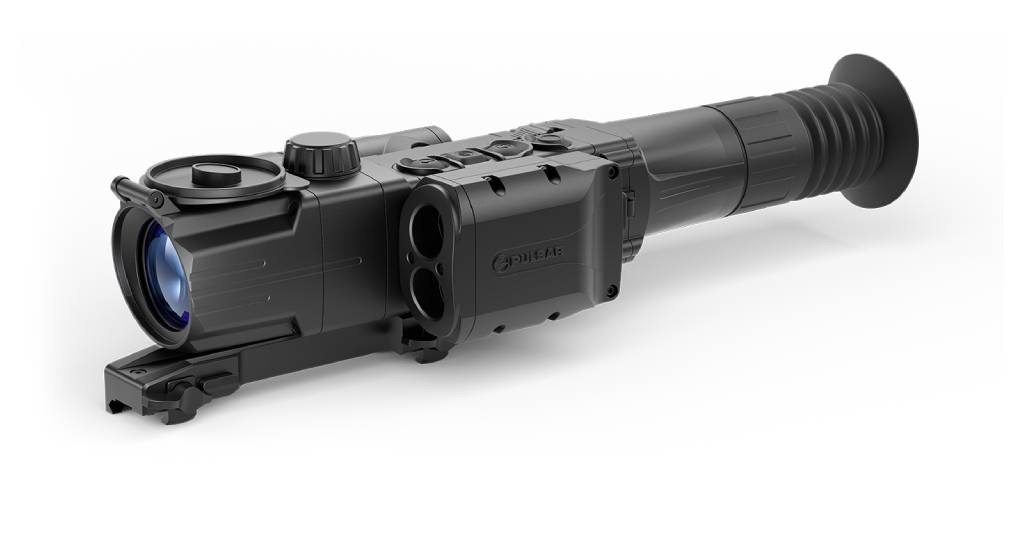
Pulsar Digisight Ultra N455 LRF Digital Night Vision Riflescope
Features
ConClusion
While somewhat pricey, the Pulsar Ultra N455 LRF Digital Night Vision Riflescope lives to the old cliché, you get what you pay for.
Specially designed for hunting, for tactical, military and law-enforcement use as well, this must be one of [t]he best systems in the marketplace today - no “ifs” or “buts” about it.
As noted in the above-captioned features, the N455 boasts picture in picture digital zoom with a Stream Vision App and ten variable electronic reticles that connect the scope to a smart device.
System is supplied with 5 individual shooting profiles that can hold up to 10 zeroing distances.
Do yourself a favor and check this one out before making your final purchasing decision.
2. ATN X-Sight 4K Pro Smart Day/Night Rifle Scope
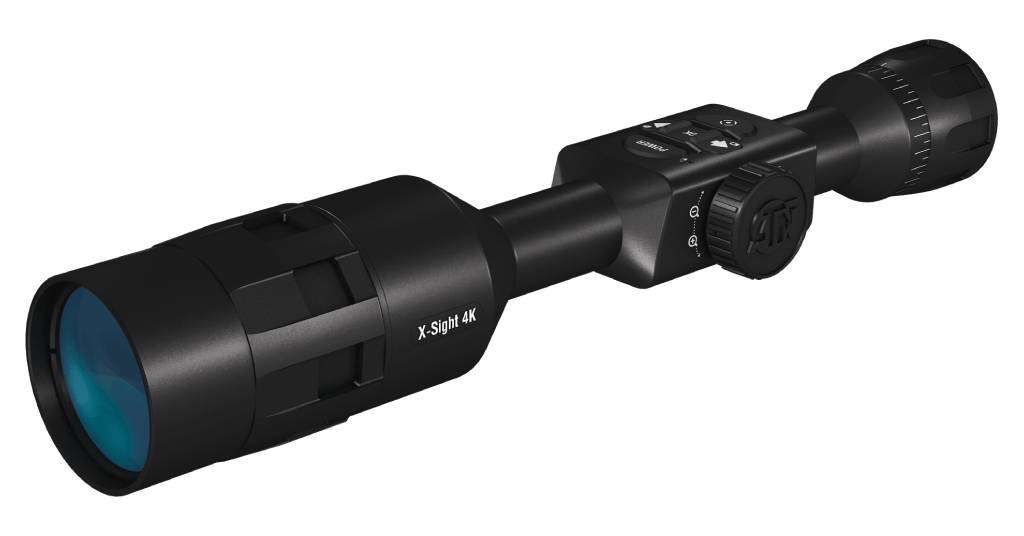
ATN X-Sight 4K Pro Smart Day/Night Rifle Scope
Features
ConClusion
So, as my second pick, I have the ATN X-Sight 4K Pro Smart Day/Night Rifle Scope.
The HD Sensor in this system delivers enhanced image sensitivity.
For the hunters, the ‘Enhanced Night Vision’ mode brings a hidden prey in sharp focus for a precise target acquisition in total darkness.
As noted above, this system comes with quite a few smart features, all of which will only add to your accuracy while aiming and shooting at targets.
I personally find the price on this system quite competitive as it relates to the added value features you find in this system.
3. ATN OPMOD Thor LT 320 4-8x35mm Thermal Imaging Riflescope
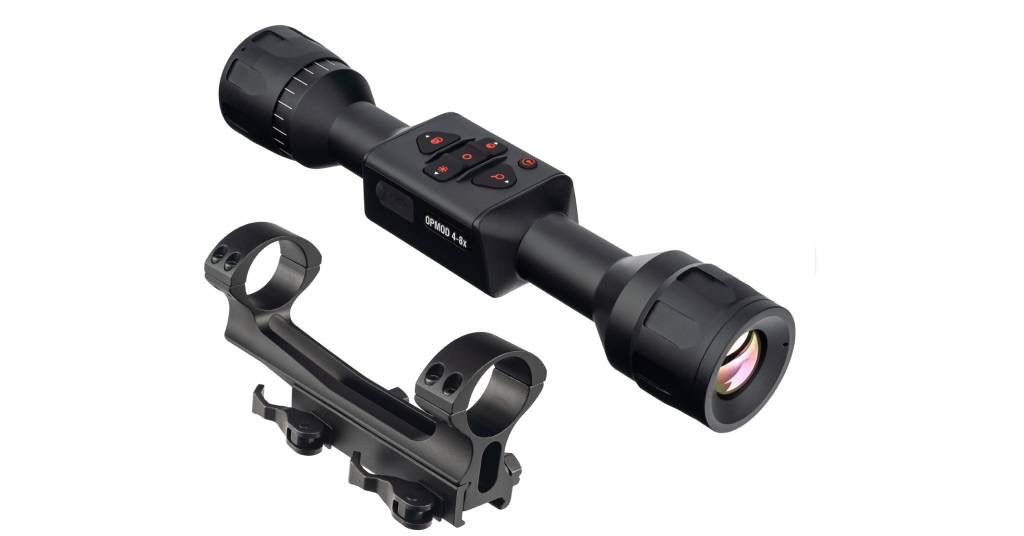
ATN OPMOD Thor LT 320 4-8x35mm Thermal Imaging Riflescope
Features
ConClusion
So ATN thrives on making thermal imaging which upgrades its systems with cutting-edge technology.
The 3 ATN OPMOD Thor LT systems are light weight with ultra-low power consumption offered by new internal lithium low battery consumption with 10+ hours of running time.
The ATN OPMOD Thor LT systems are easy to mount with standard 30 mm rings.
The ATN Thermal Targets are a great and effortless way to Zero-In your Thermal Scope, while removing the frustration of finding a hot or cold target.
I most definitely would urge you to check-out the 3 ATN OPMOD Thor LT system.
4. Bestsight DIY Digital Night Vision Scope - Best Cheap Option
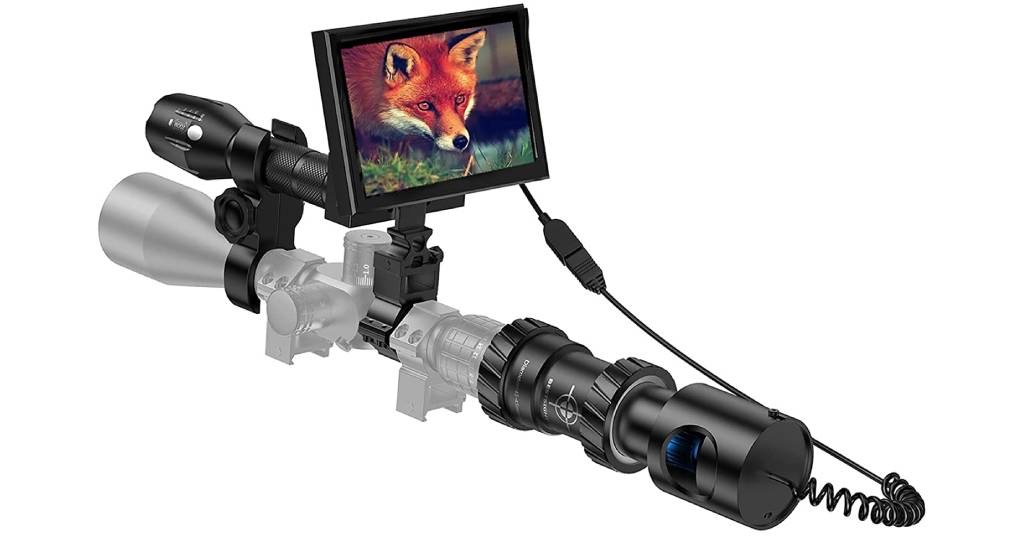
Bestsight DIY Digital Night Vision Scope
Features
ConClusion
So, if you have read any of my previous reviews, you may well know by now, I have made it a habit to have as one of my top picks a system which I consider to be the best money can buy for you.
In other words, I am used to always picking one item for all the bargain hunters out there whose purchase is governed mostly by their pocketbooks.
As far as telescopic sights and scopes, friends, this is it, the Bestsight DIY Digital Night Vision Scope is, by a long stretch, [t]he most affordable and the absolute best system your money can buy – that simple.
As far as I am concerned, this is just an amazing product for the money.
My only suggestion to you if you do decide to purchase this system is to buy yourself an additional 5W IR illuminator.
That said, however, again, the Bestsight DIY scope is the absolute best that money can buy you.
5. Armasight Nemesis Gen 2 Plus
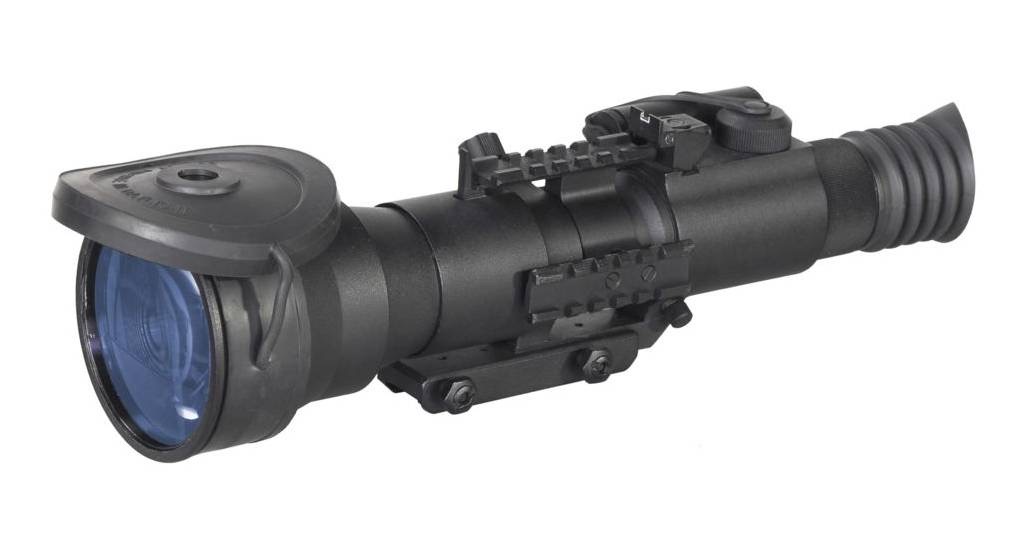
Armasight Nemesis Gen 2 Plus
Features
ConClusion
So, if you are interested in buying a real nice Gen 2+ system, the Armasight Nemesis Gen 2 Plus should be your choice.
This is a scope with appreciably better resolution and much further range capabilities than most other systems now available in the marketplace.
This is a scope for serious hunters.
Overall, from my own personal experience, this is one of the best Night Vision scopes you will find, albeit one that I think is very reasonably priced.
Strongly urge you to check this one out for yourself – you will be glad you did.
6. Pulsar Digisight Ultra N450 LRF
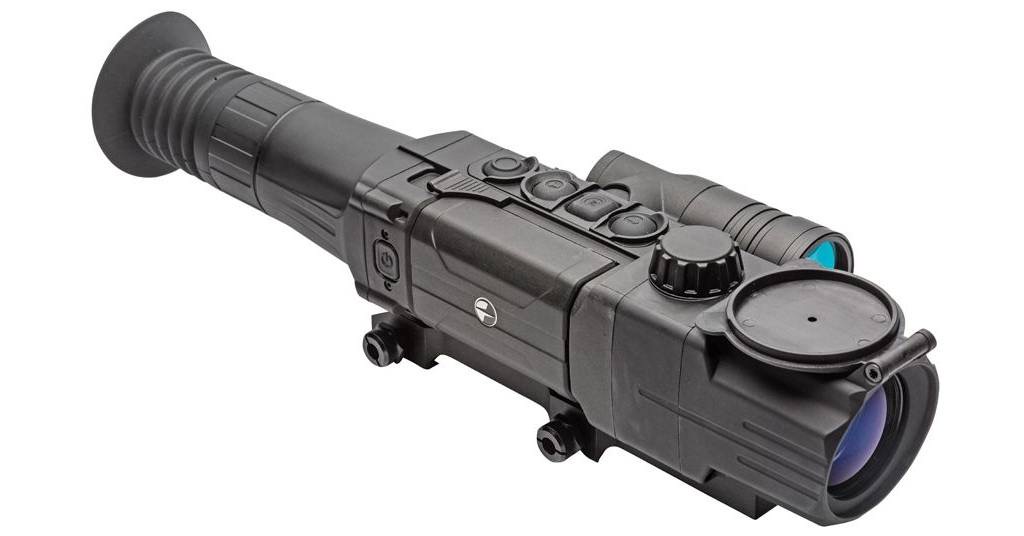
Pulsar Digisight Ultra N450 LRF
Features
ConClusion
All right, so you are after some of the best digital night vision scopes you can buy. I say, look no further than the Pulsar Digisight Ultra N450 LRF, notably, another Pulsar product on my top picks for scopes.
These systems are multi-functional to say the least. Some of the best uses include but are not limited to night shooting, day shooting, tactical use, hunting, scouting, varmint control, digital NV and close to mid-range detection, to mention a few.
Put it simply, if you are one of those, like myself, who is always looking for the best of what digital technology has to offer, you just must include the Pulsar Digisight Ultra N450 LRF as one of your topmost considerations.
Simply put, again, this system has all the extra perks to make this an extremely accurate rifle scope.
7. Bering Optics D-790W Gen 3+ Night Vision Scope
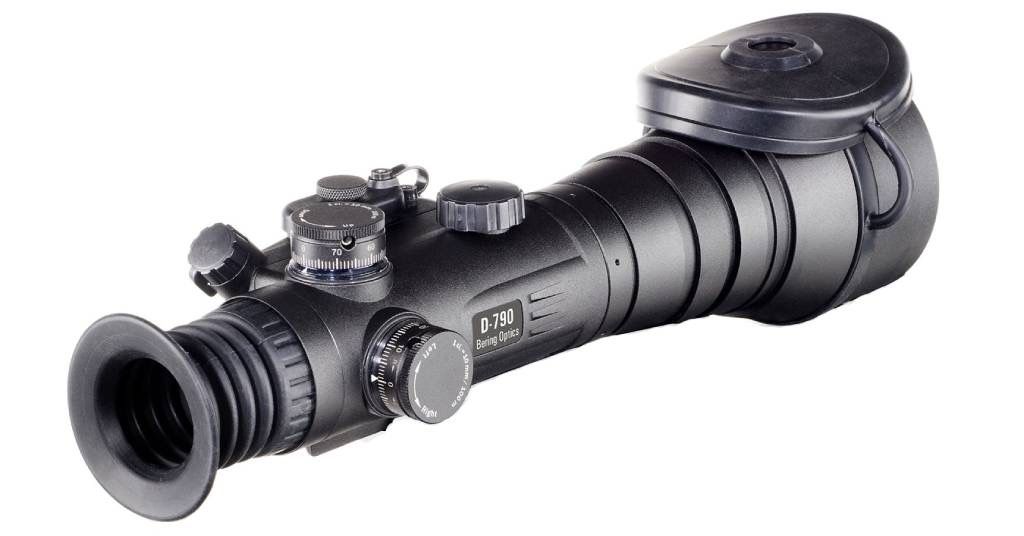
Bering Optics D-790W Gen 3+ Night Vision Scope
Features
ConClusion
Whether you are a professional hunter, you are into tactical use, or law-enforcement, regardless, the Bering Optics D-790W was designed for any of these applications, and then some.
Said another way, this system was meant for serious NV business.
Whenever your application calls for long-range precision and when unmatched night vision performance is a priority, the Bering Optics D-790W has to be among your foremost considerations.
This system, as far as I am concerned, is well worth its cost for folks, like myself, looking to purchase a system that can provide you with high-definition optical quality – one of the best of what Gen 3 systems can offer.
While not offered at an inexpensive price-point, this is yet another one of those systems where you are paying for what you will get in terms of fundamental features.
8. Night Owl Optics NightShot Digital Night Vision Riflescope
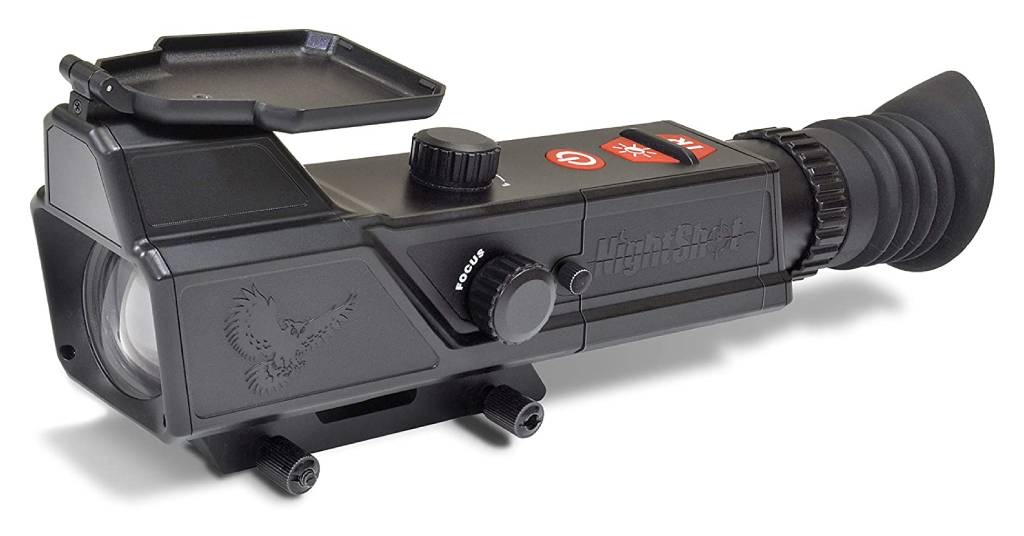
Night Owl Optics NightShot Digital Night Vision Riflescope
Features
ConClusion
So, the Night Owl Optics NightShot is yet again another very affordable system relative to what it offers.
This high-performance scope is a great low-cost solution for most all NV sighting requirements.
The 3x magnification in this system with a range of 100 yards in customary nighttime environments will help you see in the dark to swiftly acquire your target.
The Night Owl Optics NightShot was designed with all sorts of advanced high-tech features meant to enhance your shooting accuracy when it counts the most. Give this one some serious consideration.
9. Wolf Performance Optics WPA PN22K
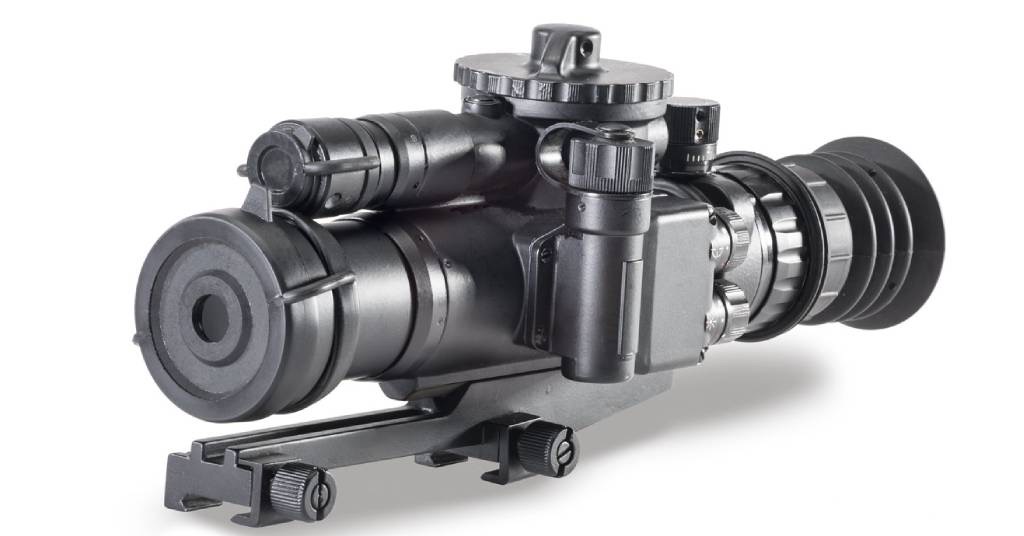
Wolf Performance Optics WPA PN22K
Features
ConClusion
I will put it to you this way, from a price-point perspective, the Wolf Performance Optics WPA PN22K is just a great buy.
The fact this system offers an ITT Gen 2+ or Gen 3, with dual channel, day and night system is, I should say, a unique buy entirely.
The PN22K was designed to work well for shooters, hunters, and all those who look for a day or night system, all rolled into one vision scope.
I personally think, for those who are on a limited budget as to how much you want to spend for a Gen 3 system, the WPA PN22K should, very much, be a part of your considerations.
While the PN22K is often thought of as a heavy scope by today’s standards, for me, this system is as lightweight as I need it to be for most applications, to the point where its performance, as I see it, offsets any weight and size disadvantages.
Please check out this one.
10. Sightmark Wraith HD 4-32x50 Digital Night Vision Rifle Scope
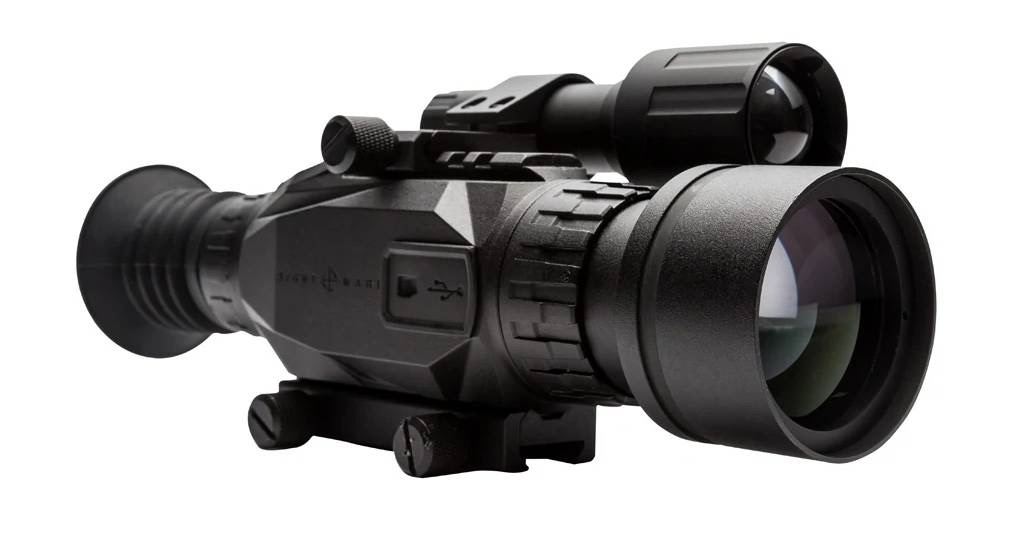
Sightmark Wraith HD 4-32x50 Digital Night Vision Rifle Scope
Features
ConClusion
The Sightmark Wraith HD 4-32x50 scope comes with up to 10 reticle options and nine color settings, which, as far as I am concerned, can only help your accuracy when shooting and hunting.
When it is pitch dark, one of the features I personally enjoy the most from this system is the extra lighting advantage within a 200 yards area offered by the 850nm IR illuminator, Picatinny mount, and lens cover.
The only issue or drawback I found with this system deals with it being somewhat bulky to carry around.
Then again, the affordable price point on this one is enough to offset the carrying downside.
Summary And Conclusions
One of the most challenging things I faced when I first set about to write this review was that of defining where to draw the line between scopes, as such, relative to their inexorably close relationship or place within the much broader universe of other night-vision devices [NVD’s] – albeit a connection which is often overstated to where the scopes’ uniqueness is detrimentally compromised.
While I do acknowledge that scopes are very much a part of a much larger night-vision gear universe, my mission and objective in this review today, nevertheless, was to give telescopic sights and scopes their much-deserved focus and attention within the much broader NVD product-line.
As you embark on your telescopic sight or scope purchasing journey, you have probably realized all the challenges presented by such an ambitious undertaking.
Moreover, as these challenges relate to the complex technologies typically associated with this product line, albeit, I will not hesitate to acknowledge my limited expertise in some of these high-tech subject-matters.
Notwithstanding such limitations, however, I still hope that my review today was sufficiently insightful as to make your journey a pleasurable experience – one which I trust will bring you long-lasting rewards in years to come.

